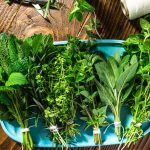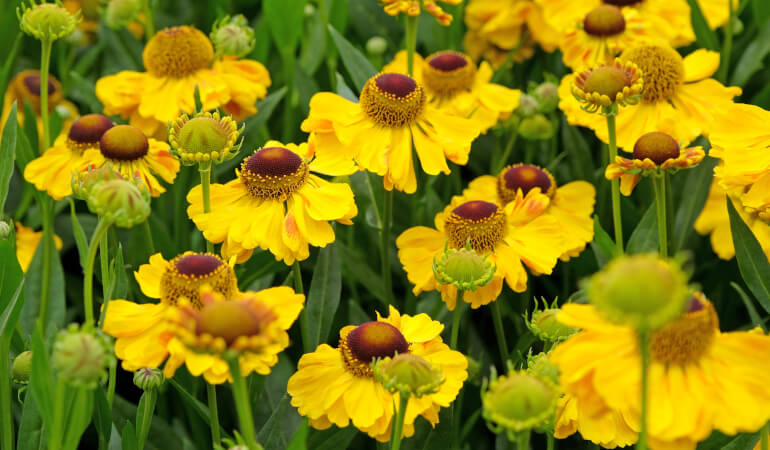
Clay soil is a challenge for many gardeners. Its poor drainage and compacted nature don’t give you too many options when choosing plantlife.
Fortunately, today’s market has plenty of plants for clay soils. You can still create the garden of your dreams. Now, you will learn not only how to select the best plants for clay soil, but also how to care for them.
Table of Contents
What is the problem with clay soil?
Clay soil has its disadvantages. For example, although it is nutrient-rich, it is quite dense. How does that make it difficult to work with?
Clay holds water like a sponge so it stays wet for too long. This leads to waterlogged roots and restricted growth. Apart from that, its tightly packed particles can choke roots and stress plants. Sometimes, roots even start to rot.
The next logical question is how long does it take for clay soil to dry out? It takes a lot. A sandy soil might shed excess moisture within a day or two after heavy rain. Clay soil, on the other hand, can linger in a damp state for several days. The weather conditions can extend that period to up to a week.
And if those challenges weren’t enough, here’s another one: pH levels. Is clay soil alkaline or acidic? It depends on your location, but many clay soils tend to be slightly acidic. This can make it harder for plants to absorb key nutrients like phosphorus and calcium. The result is weak growth. If your plants aren’t growing well, a soil pH test can help determine if adding lime is needed to balance the acidity.
What plants like clay soil and will grow well in it?
Ok, now you know why clay is not inviting to plants in general. What are the plants that do survive and thrive in it?
Best perennial plants for clay soil
These adapt easily to their environment. Perennials’ deep root systems also break up compacted soil. This naturally improves drainage. It’s also nice to learn that they provide wildlife with food and shelter.
Echinacea (Coneflower)
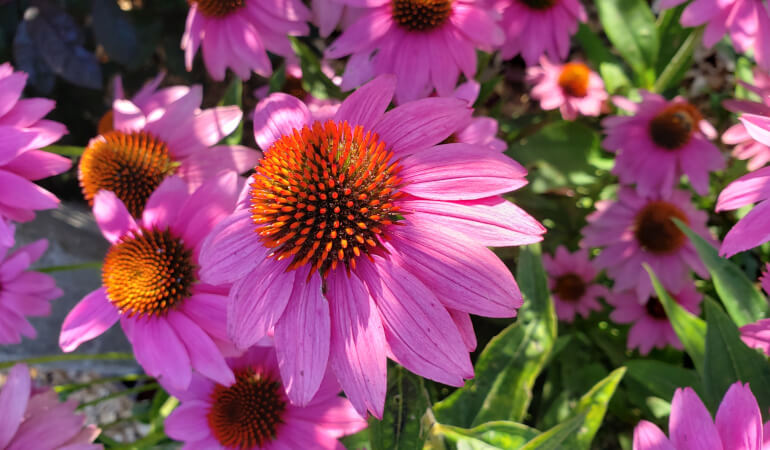
With its large, daisy-like flowers in shades of pink, purple, and white, Echinacea brings bold colour and structure to any garden. The Coneflowerl tolerates both wet and dry conditions once established. Plant it in full sun. Once mature, be careful not to overwater.
Helenium (Sneezeweed)

The warm-toned flowers of Helenium create a fiery appearance with their yellow orange and red colours. Its strong roots push through heavy soil with ease. It actually thrives in the moisture clay so easily retains. This sun-loving plant pairs beautifully with ornamental grasses.
Rudbeckia (Black-eyed Susan)
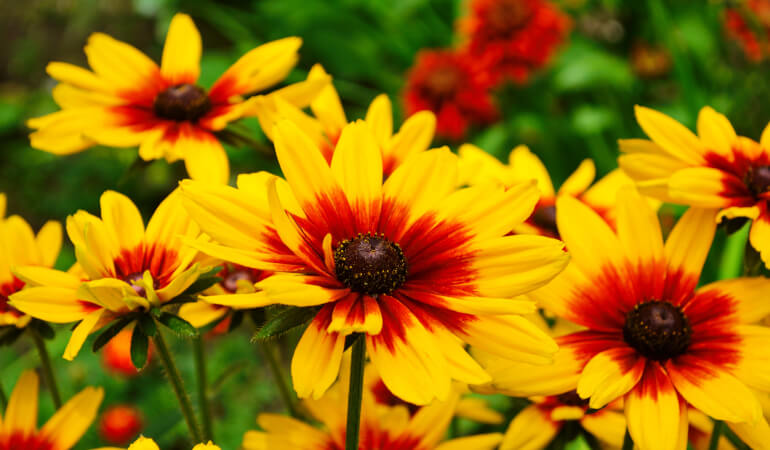
Bright yellow or orange flowers with dark brown centres bring a cheerful late-summer display. Rudbeckia’s deep roots help it handle both wet and dry conditions. This is definitely a low-maintenance plant for clay soil. It thrives in full sun and attracts plenty of pollinators.
Ornamental grasses
These are not just decorative. Many are also low-maintenance and improve soil structure.
Miscanthus sinensis (Chinese Silver Grass)
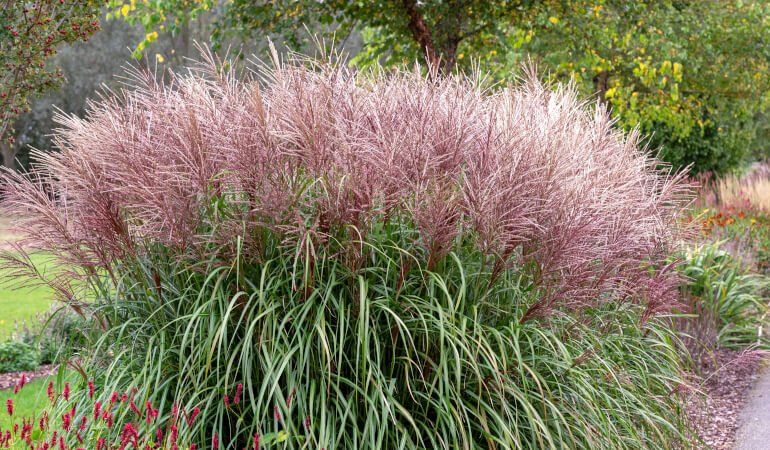
Tall and elegant, this grass produces arching green leaves that turn golden in autumn, along with feathery plumes that add softness to a border. Miscanthus is incredibly resilient and can handle the moisture retention of clay soil. It prefers full sun and benefits from a spring trim to encourage fresh growth. Fun fact: some varieties grow over two metres tall.
Calamagrostis x acutiflora ‘Karl Foerster’ (Feather Reed Grass)
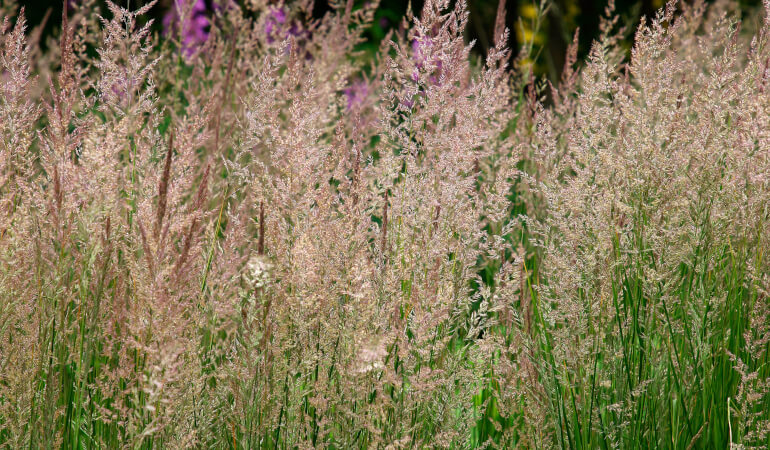
This upright, clump-forming grass is a fantastic choice for small gardens. It doesn’t spread aggressively. Its golden-brown flower spikes stand tall from early summer through winter. It thrives in full sun but can tolerate partial shade and copes well with clay soil.
Molinia caerulea (Purple Moor Grass)
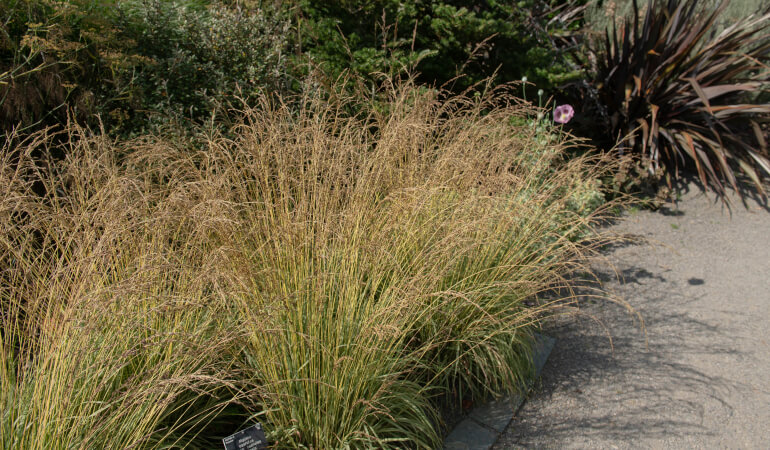
A native UK species, purple moor grass forms graceful clumps of fine green leaves that turn golden in autumn. It’s ideal for wetter clay soils and works beautifully in naturalistic planting schemes. Unlike some grasses, it doesn’t overpower other plants, making it a great companion for perennials and wildflowers.
Shrubs suitable for clay soil with poor drainage
Clay soil is perfect for shrubs. They stabilise soil, improve drainage, and attract birds and pollinators. All this with minimal upkeep.
Ilex aquifolium (English Holly)

A classic evergreen. English holly is tough, adaptable, and tolerant of wet conditions. Its glossy, spiky leaves provide year-round interest, while its red berries offer a winter food source for birds. It grows well in sun or shade and works as a hedge or standalone shrub.
Viburnum opulus (Guelder Rose)
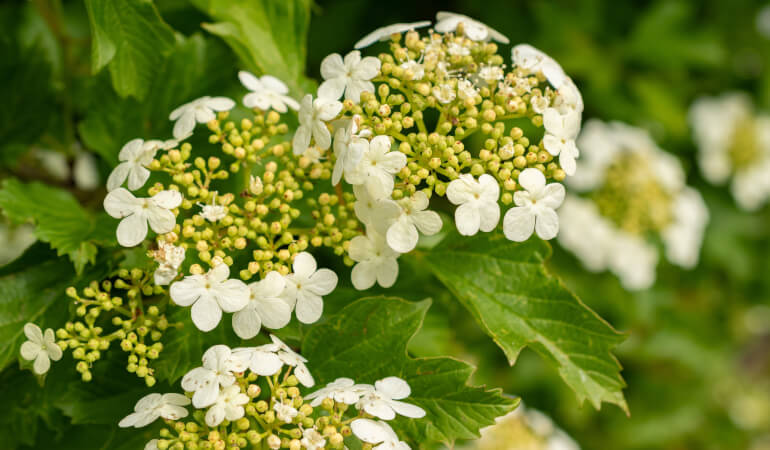
This native UK shrub produces clusters of white flowers in spring, followed by bright red berries in autumn. It thrives in damp, heavy soil and is brilliant for attracting beneficial insects and birds. It grows well in sun or partial shade and benefits from a winter prune to maintain its shape.
Salix purpurea (Purple Willow)

It has slender, arching stems with narrow blue-green leaves, and in spring, it produces attractive catkins. If your garden suffers from particularly poor drainage, purple willow is a great choice. It thrives in wet conditions and helps stabilise soil, preventing erosion.
Trees
Clay soil can be tricky for trees. However, some can handle it and even improve it.
Betula nigra (River Birch)
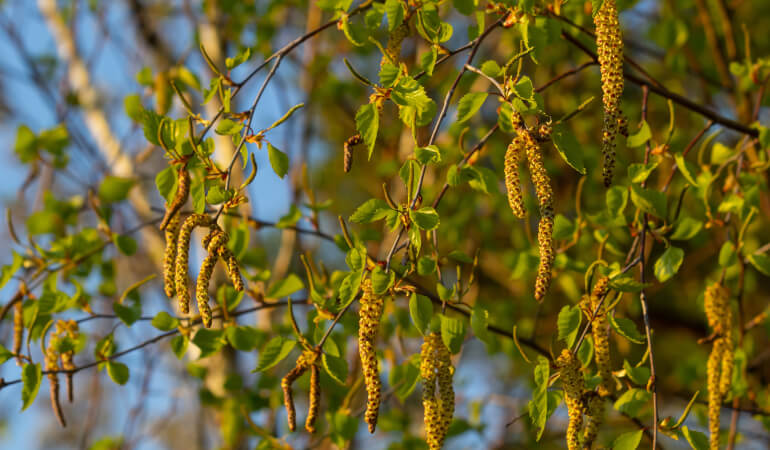
River birch is a fantastic choice, as the name suggests, it naturally thrives in wetter conditions. It has striking peeling bark in shades of pink, cream, and cinnamon. This fast-growing tree does best in full sun and is highly resistant to disease. A great low-maintenance option.
Salix alba (White Willow)
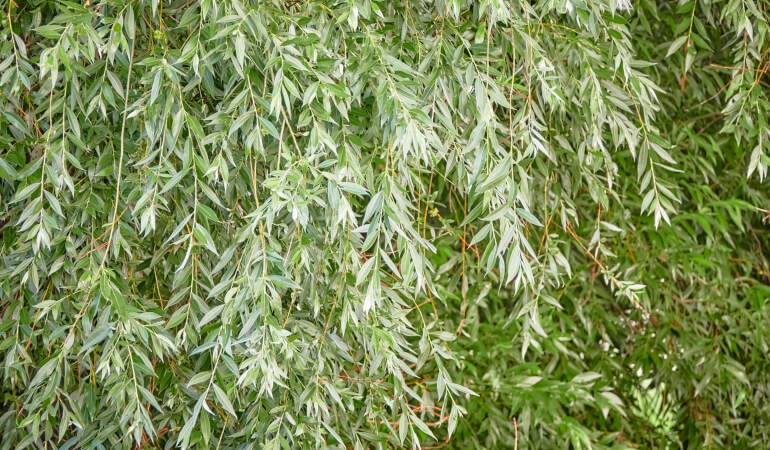
White willow is a great choice for gardens with poorly drained clay soil, as it thrives in damp conditions and helps stabilise the ground. It has long, slender leaves with a silvery underside that shimmer in the wind. This fast-growing tree provides excellent shelter for wildlife and can be pruned back hard.
Quercus robur (English Oak)
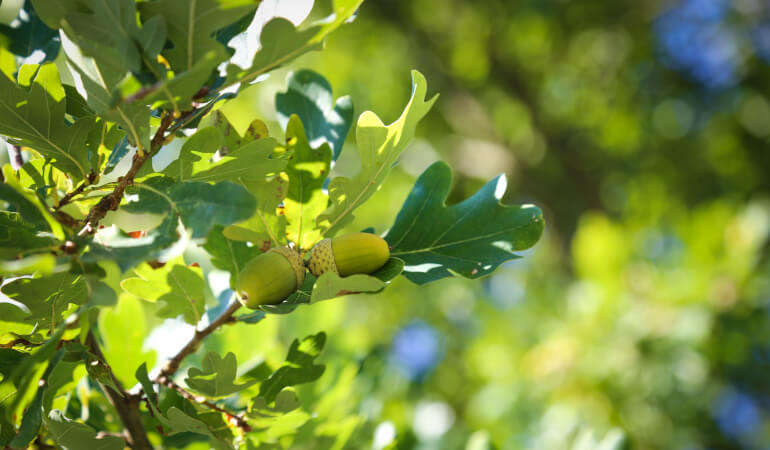
A classic choice for larger gardens, English oak is a strong and resilient tree that can tolerate heavy clay soil once established. Its broad canopy provides shade and shelter, while its acorns are an important food source for birds and small mammals. Oak trees are slow-growing but incredibly long-lived. They prefer full sun and don’t require much maintenance beyond occasional thinning of lower branches.
Ground-cover plants for clay soil
You may grow these beauties on clay soil too.
Ajuga reptans (Bugleweed)
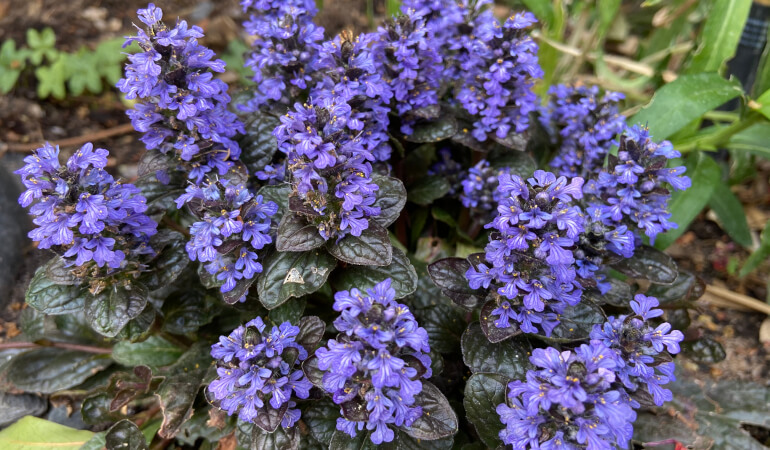
A fast-spreading ground cover with deep green or bronze-tinged leaves. In spring and early summer, it produces spikes of deep blue flowers that attract pollinators. This plant thrives in heavy, damp soil and prefers partial shade. It requires little maintenance beyond the occasional trim to keep it neat.
Geranium macrorrhizum (Bigroot Geranium)
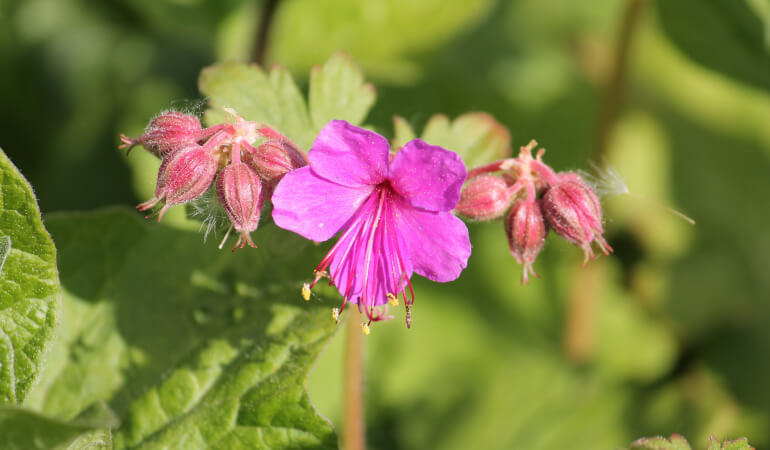
This geranium tolerates clay soil and extreme weather. It has fragrant leaves that turn red in autumn and grows in sun or shade. It also spreads easily without becoming invasive.
Lamium maculatum (Spotted Dead-Nettle)
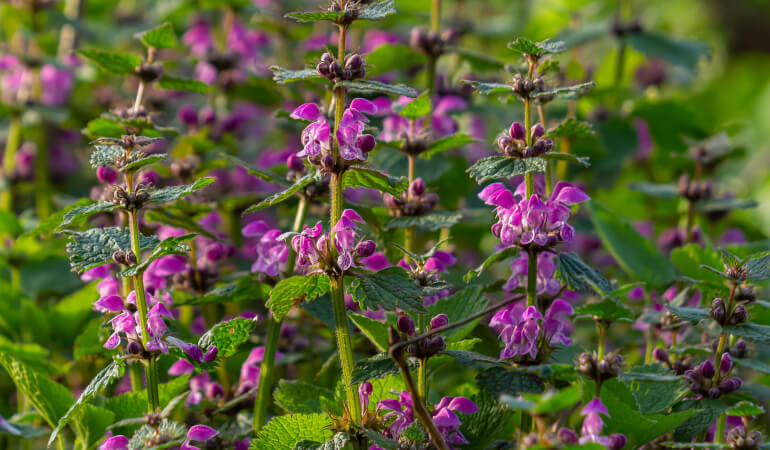
With its silver-patterned leaves and small pink, purple, or white flowers, Lamium adds brightness to shady areas. It’s particularly useful in damp, compacted soil and can spread quickly to fill in bare patches. It’s also a great plant for attracting bees, making it both practical and wildlife-friendly.
Climbers favouring clay soil
Climbing plants are perfect for clay soil as they aid drainage and conceal eyesores. They need little upkeep and bring colour and height to your garden.
Hedera helix (English Ivy)

A climbing plant that thrives in just about any soil. Yes, including heavy clay. It has thick, evergreen foliage that stays green all year round. It’s also wildlife-friendly, providing shelter for birds and insects. Ivy can cope with both sun and shade, though it prefers a more sheltered position in clay soil. It’s very easy to grow and requires little maintenance.
Lonicera (Honeysuckle)

It thrives in moist conditions. So it is ideal for areas that tend to hold water. It blooms with tubular flowers in shades of yellow, white, or red, which attract bees and hummingbirds. Honeysuckle is also fairly low-maintenance. Just make sure to cut it back after flowering to keep it tidy. It grows best in full sun or partial shade.
Rosa (Climbing Rose)
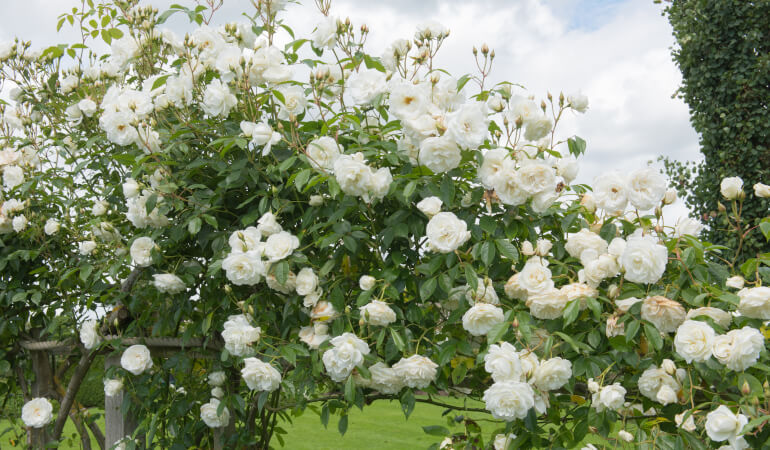
Climbing roses can be trained to grow on walls, fences, or arches. For the best results, plant your climbing rose in a sunny spot. Also, improve the soil’s drainage if necessary, and make sure it has something sturdy to climb on.
How to plant in clay soil
Here is how to embed and also how to keep plants alive in clay soil.
1. Clearing and preparing the site
Clear the area of weeds, rocks, and debris. Afterwards, you need to improve the soil’s structure.
Add organic materials to the top six to eight inches of soil, such as compost, well-rotted manure, or peat moss. This will improve fertility and drainage and facilitate root growth.
2. Planting techniques for heavy soils
When it’s time to plant, dig a hole twice as wide as the root ball. However, make it only as deep as the root ball itself. Planting too deep can lead to waterlogging. You already know that it may cause root rot.
Space your plants. However, do it according to their mature size, not their current size. This will allow for proper air circulation and prevent overcrowding. Set places for each plant and where it will feel best.
3. Maintaining the plants
Once in the ground, you need to take care of your new plants. Water carefully since clay soil holds moisture longer than other types. During dry spells, water deeply to stop the soil from cracking. Still, don’t overwater. Otherwise, you risk waterlogging.
Check the soil before watering by pressing your fingers into the top few inches. If it still feels damp, wait a little longer. If drainage becomes a problem, mix in more organic matter like compost or leaf mulch to improve structure. Another thing you can do is plant in raised beds to help roots get better airflow.
Monitor plant health and adjust watering and soil care accordingly. Watch for signs of stress like wilting, yellowing leaves, or slow growth and adjust care. Mulch around plants with bark or manure to regulate moisture.
Ways to improve clay soil
To break up heavy clay soil add organic matter. Compost, well-rotted manure, or leaf mulch would suffice. They improve drainage and boost air circulation. They also provide nutrients.
And speaking of improving airflow, we have to mention aeration which is another way to break down the heavily compacted soil. But how exactly to aerate clay soil? Use the technique called double digging. Dig one trench. Make it about a spade’s depth. Then use a garden fork to loosen the soil at the bottom. Next, dig a second trench beside it and move that soil into the first trench. This loosens the soil 12 to 18 inches below the surface. This facilitates root growth and nutrient absorption.
And how to get clay soil to drain? Add small amounts of sand. Avoid using too much, though. It can make the soil hard and unworkable.
For fertilising, you might ask, what fertiliser should I use with clay soil? Organic options like composted manure or slow-release fertilisers work best. They break down gradually and improve soil texture over time.
To maintain good soil health, mulch around plants. That will retain moisture and prevent compaction. Regularly add organic matter to keep the soil loose and nutrient-rich.
Do you need your clay soil prepared? Check our garden maintenance schedule.
Enter your postcode to view our rates and availability in your area.
For questions about the services we offer visit our main site
Takeaways
- Clay soil won’t work for just any plant because it is dense and retains moisture;
- Before planting anything you need to improve the soil’s drainage and fertility;
- Water clay soil carefully because with clay soils it’s easy to overwater;
- When you cultivate, make the hole only as deep as the root ball. Too deep can lead to waterlogging.



